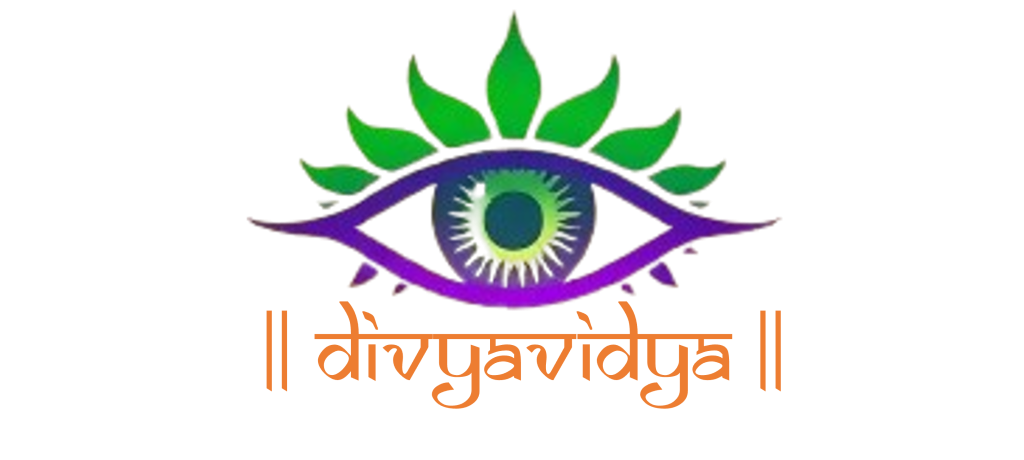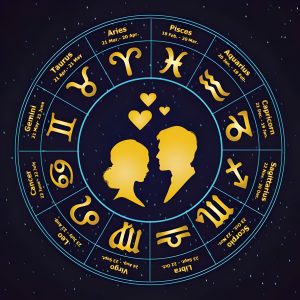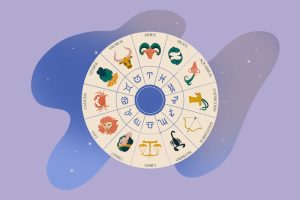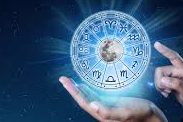
In Hindu mythology, Brahma is revered as the creator of the universe. Known as part of the Hindu trinity, or Trimurti, alongside Vishnu, the preserver, and Shiva, the destroyer, Brahma’s role is unique in shaping the cosmos. While he is less worshipped in modern Hinduism, his significance remains foundational.
Understanding Brahma’s Role in Hindu Mythology
Brahma’s role in Hindu mythology is to create the universe and all beings within it. He is often depicted with four faces, each facing a different direction, symbolizing his omniscience and the reach of his creative power. Brahma’s four hands hold symbols of wisdom, creation, and knowledge—like the Vedas, a water pot, a scepter, and a lotus flower.
Brahma’s association with Saraswati, the goddess of knowledge and wisdom, highlights his connection to intellect and enlightenment. Together, they represent the beginning of creation, where knowledge and awareness are fundamental to the universe’s existence. Despite his grand role, Brahma’s worship has waned over the centuries, with more focus shifting to Vishnu and Shiva. Nevertheless, his identity as the “grand creator” places him among the most intriguing figures in Hindu cosmology.
The Hindu Trinity: Brahma, Vishnu, and Shiva
In Hinduism, the concept of the Trimurti encapsulates the divine roles of creation, preservation, and destruction. Brahma stands as the creator, Vishnu as the sustainer, and Shiva as the destroyer. Together, they form a cycle representing birth, life, and death—an essential concept in Hindu philosophy.
Brahma’s unique place in this trinity is critical for balancing the cosmic order. Vishnu and Shiva are more widely worshipped, perhaps due to their protective and transformative roles, which resonate more closely with human experiences. Brahma, being the creator, is somewhat distanced from the immediate affairs of life, and as such, he is perceived more abstractly. However, his contribution as the originator of all life is indispensable, as it is Brahma’s creation that Vishnu preserves and Shiva transforms.
The Symbolism of Brahma
Brahma’s depiction is rich in symbolism. His four heads represent the four Vedas, symbolizing all-encompassing wisdom and knowledge. His seated posture on a lotus denotes purity and divine authority. Each of his hands holds objects with unique meanings— the Vedas signify sacred knowledge, while the lotus represents purity and enlightenment.
The depiction of Brahma’s face in all four cardinal directions illustrates his omnipresence and his vision over the entire cosmos. His association with swans, creatures believed to be able to separate milk from water, symbolizes discernment and the ability to distinguish between truth and falsehood. These attributes elevate Brahma as a god embodying purity, wisdom, and the eternal quest for knowledge.
The Origins of Brahma in Hindu Scriptures
Brahma’s origins are rooted in ancient Hindu scriptures, particularly in the Vedas and Puranas. In the Rigveda, one of Hinduism’s oldest texts, Brahma is described as Prajapati, a primeval creator who initiated life through a cosmic egg. Later scriptures, such as the Puranas, elaborate on his life, marriage to Saraswati, and his role in the creation of the universe.
Brahma’s position and attributes in these texts highlight the transition from an abstract creative force to a personalized deity within Hinduism. Though he is less emphasized in rituals and temples today, his presence in scriptural texts preserves his legacy as the creator. The Puranas even narrate his task of setting the universe in motion by first creating gods and sages, who in turn continue the cycle of creation.
Why Brahma is Less Worshipped Today
Although Brahma plays a crucial role in the creation mythos of Hinduism, he is not as widely worshipped as other gods like Vishnu and Shiva. This shift in worship patterns is attributed to several myths and cultural factors. One story from the Brahma Purana explains that Brahma once desired his own creation, which displeased Shiva, who cursed him, leading to a decline in his worship.
Cultural shifts over centuries also placed greater emphasis on gods associated with day-to-day protection and salvation, roles fulfilled by Vishnu and Shiva. Additionally, the abstract nature of creation, once completed, may feel less immediate or personal compared to the tasks of preservation and transformation that continue in daily life. Yet, in some temples and particularly in Pushkar, Rajasthan, Brahma continues to receive homage as the creator god.
Common Misconceptions about Brahma
- Brahma as the Supreme Deity: While Brahma is a key figure in Hindu mythology, he is not considered the supreme deity in all sects. This title is often attributed to Vishnu or Shiva.
- Limited Temples for Brahma: A common misconception is that there are no temples for Brahma. While few exist compared to other deities, the Pushkar temple is a prominent exception.
- Brahma’s Role Post-Creation: Brahma is often thought to be disengaged after creating the universe. However, Hindu texts imply his continued involvement, albeit indirectly, through sages and other gods.
This content offers a comprehensive view of Brahma’s role, emphasizing his creation role and the rich symbolic depth he holds within Hindu mythology. By addressing both his scriptural origins and his current status, readers gain an insightful look at one of Hinduism’s foundational deities.

The Influence of Brahma in Modern Hindu Culture
Even though Brahma’s active worship has diminished, his influence on Hindu culture remains significant. Brahma is often invoked in philosophical discussions about the origins of life and the universe. His role as the creator aligns with the Hindu worldview, emphasizing cycles of creation, preservation, and destruction.
Educational institutions and artistic endeavors sometimes use Brahma’s imagery to symbolize knowledge and creative inspiration. The connection between Brahma and Saraswati also reinforces the idea of learning and wisdom as integral to creation. Schools and universities dedicated to the arts or sciences may feature statues or paintings of Brahma and Saraswati to honor this intellectual lineage.
Additionally, Brahma’s name and attributes often appear in traditional Hindu prayers and ceremonies, particularly during significant life events like childbirth or house blessings. These moments symbolize beginnings, tying back to Brahma’s primary role as the initiator of creation.
Brahma’s Legacy in Global Perspectives
Brahma’s role in Hindu mythology also draws comparisons to creator figures in other cultures and religions. For instance, in Greek mythology, the god Prometheus is associated with creation and the gifting of knowledge to humanity, similar to Brahma’s connection with wisdom through Saraswati. Similarly, the Abrahamic traditions speak of a singular God responsible for the universe’s creation, echoing Brahma’s cosmic role.
This universality highlights how the concept of a creator resonates across cultures. It also shows how Hindu mythology’s richness contributes to global discussions on divinity, creation, and the cosmos. Brahma’s multi-faceted identity as a figure of wisdom, purity, and creation continues to inspire dialogues in philosophy, art, and religion worldwide.
Exploring Brahma in Hindu Rituals and Festivals
While Brahma is less commonly worshipped than other deities, his presence is still honored in specific rituals, particularly those focused on beginnings or new ventures. Navaratri, for example, celebrates divine feminine energy and includes prayers to Saraswati, Brahma’s consort, for wisdom and creativity. By invoking Saraswati, worshippers indirectly acknowledge Brahma’s influence as the god who brought forth creation alongside the goddess of knowledge.
In certain parts of India, rituals connected to education or the arts may include offerings to Brahma or prayers recognizing his role in the universe. This practice is common during Vasant Panchami, a festival dedicated to Saraswati, where Brahma’s contributions to creation and knowledge are acknowledged as essential to spiritual growth and intellectual pursuits.
At Pushkar Lake in Rajasthan, the annual Pushkar Fair is held near one of the only dedicated Brahma temples. Pilgrims gather to honor Brahma and perform sacred rites around the lake, believed to have spiritual cleansing properties. This festival stands as one of the rare times Brahma worship is centralized and celebrated by devotees on a large scale, highlighting his enduring, albeit specialized, role in Hindu tradition.
Brahma in Hindu Philosophy: The Cycle of Creation and Rebirth
Brahma’s role in Hindu mythology goes beyond the literal creation of life—he represents the Hindu philosophy of cyclical time. Unlike linear concepts of time, Hinduism views existence as an endless cycle of creation (Brahma), preservation (Vishnu), and destruction (Shiva), known as Samsara or the cycle of rebirth.
In this cycle, Brahma’s task is to initiate each new era, known as a kalpa, which stretches over millions of years. At the end of each kalpa, the universe dissolves, only to be re-created by Brahma again, thus perpetuating an eternal cosmic rhythm. This belief reinforces the Hindu perspective on impermanence and the idea that all life is continuously renewed.
Through this philosophical lens, Brahma’s influence extends beyond his persona as a deity; he embodies the Hindu understanding of transcendence and impermanence. His creation is not a single act but a recurring process, aligning with the Hindu acceptance of birth, death, and rebirth as part of spiritual evolution.
Lessons from Brahma’s Story: Embracing Creation in Daily Life
Brahma’s story, though rooted in mythology, holds relevant teachings for modern life. As the god of creation, Brahma symbolizes the power of beginnings and the courage required to bring new ideas and projects into existence. His connection with wisdom and knowledge encourages us to pursue learning and personal growth as part of our creative journeys.
Furthermore, the diminishing of Brahma worship highlights the importance of balance—even in creation, there must be limits, allowing other forces to sustain and transform what exists. In daily life, this principle encourages us to create with purpose and humility, understanding that each new endeavor contributes to a larger, interconnected universe.
By understanding Brahma’s role, individuals can find inspiration in their personal paths of growth and creativity. His story encourages us to value wisdom, embrace new beginnings, and see each creation as part of a larger cycle that honors both the creator and the creation.
Final Thoughts: Brahma’s Enduring Presence
Though often overshadowed by Vishnu and Shiva, Brahma remains an essential figure in Hindu mythology. His legacy is not measured by the number of temples or worshippers but by his timeless role in the cosmic order and the philosophical insights his story provides.
As the creator god, Brahma stands as a reminder that every beginning holds potential and that knowledge is the foundation of growth. His role in Hinduism may be complex and multifaceted, yet it offers a rich exploration of creation, existence, and the pursuit of understanding.
In contemplating Brahma, we connect to the universal themes of origin and purpose. His story invites us to honor the power of creation within ourselves, to seek wisdom, and to contribute thoughtfully to the world. Even in a modern world, the ancient story of Brahma holds timeless lessons on life, knowledge, and the beauty of creation that continues to inspire.
Conclusion: Understanding Brahma’s Eternal Significance
Brahma’s role as the creator god in Hindu mythology may not dominate modern worship practices, but his significance endures. He stands as a symbol of beginnings, the embodiment of wisdom, and a cornerstone of the Hindu cosmic cycle.
By exploring Brahma’s mythology, symbolism, and cultural impact, we gain insight into Hinduism’s intricate worldview. His enduring legacy reminds us that creation is the foundation of existence, and knowledge and wisdom remain its driving forces.
Brahma’s story invites us to reflect on the origins of life, the importance of learning, and the balance of creation within the universe. Even as his temples remain few, his presence in the collective consciousness of Hinduism ensures that his story is never forgotten.




